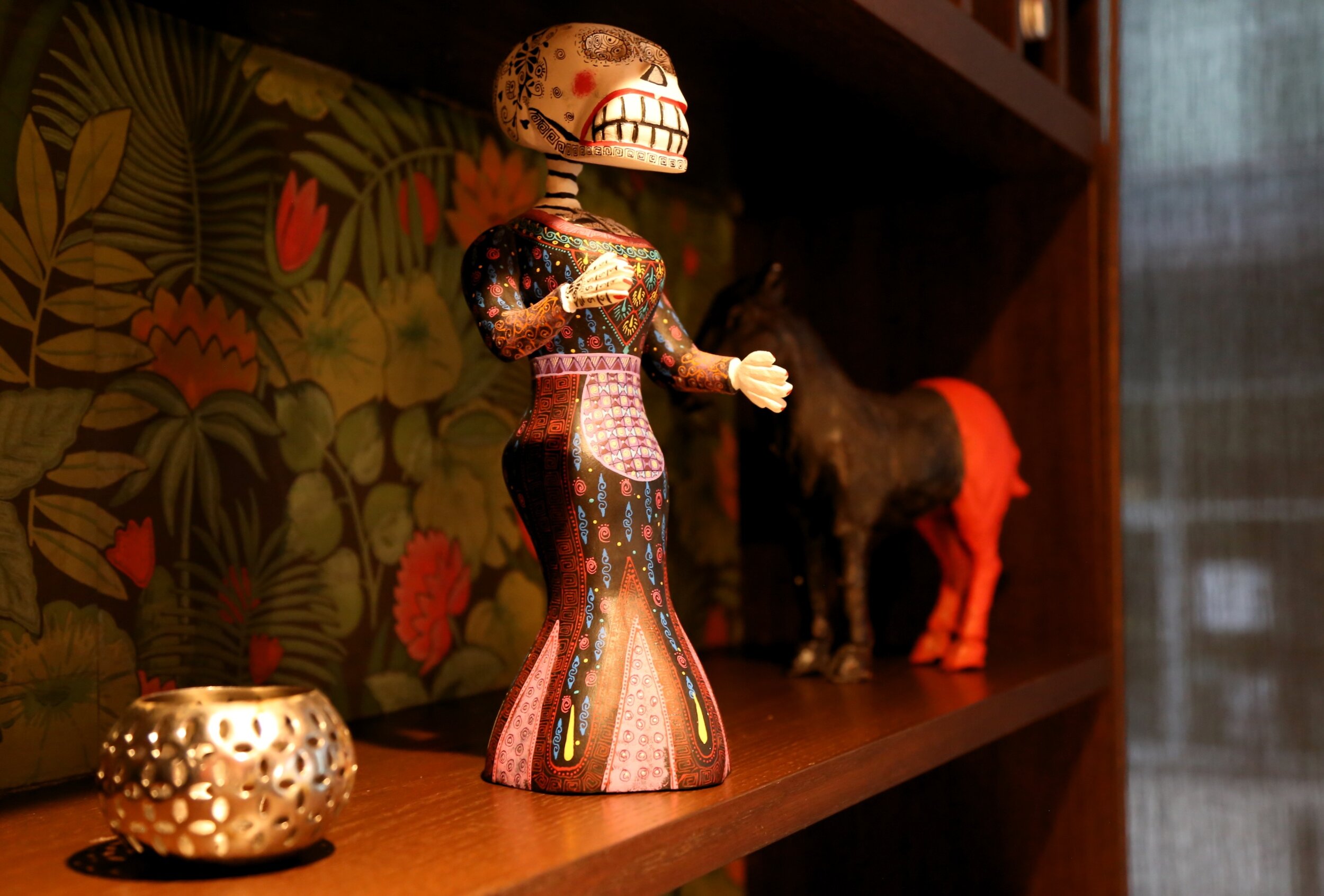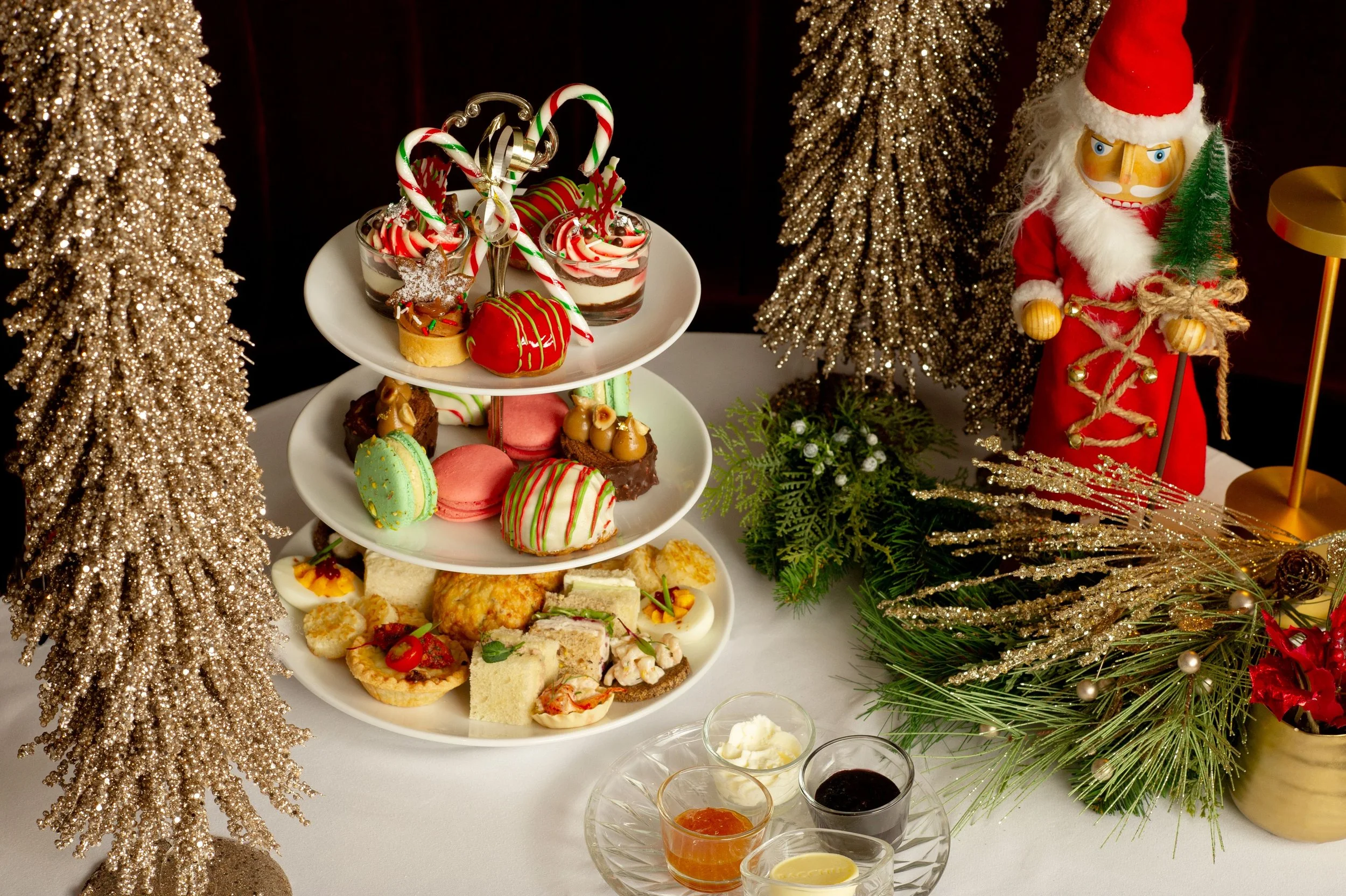Ophelia chef celebrates Día de los Muertos with a true taste of Mexico
Veracruz native Francisco Higareda is marking Day of the Dead with a traditional five-course menu
Ophelia restaurant features folk art like this mural by renowned Mexican visual artist Saicker (César Alegría). Photo by Ophelia
OPHELIA EXECUTIVE CHEF Francisco Higareda wants Vancouverites to have a better understanding of the real food of his native Mexico. One way the Veracruz native is doing that is by celebrating Día de los Muertos with the kinds of dishes he grew up with at a one-night-only dinner.
Taking place on October 31, the evening will see the Olympic Village restaurant transformed into a mystical space with hundreds of candles, Mexican folk music playing, and skull makeup. Francisco and newly appointed executive sous chef Victor Ramos will collaborate on a five-course meal featuring dishes such as pavo mole de manzana (free-range turkey with apple mole) and costilla de res en mole negro (braised beef short rib with black mole).
Day of the Dead is an important celebration in Mexico, where it’s in fact a multi-day event running annually from October 31 to November 2. Families come together to remember the souls of deceased relatives through rituals imbued with meaning, including colourful parades, lively music, home-made altars, and traditional food and drink. Día de los Muertos is on the UNESCO list of Intangible Cultural Heritage of Humanity. Its roots go back several thousand years to the practices of Aztec, Toltec, and other Nahua people, who considered mourning the dead disrespectful.
“We celebrate in Mexico by cooking and eating, having fun, and remembering the people that are gone,” Higareda tells Stir. “For Mexicans, Día de los Muertos is a beautiful tradition. This holiday means to me an opportunity to spend time and celebrate with my family and friends. It means remembering our family members that have passed, and cooking.”
“Food is a huge part of our culture,” he says. “It's how we bring the family together.”
The October 31 event at Ophelia reflects Higareda’s overarching goal to broaden local diners’ understanding of Mexican cuisine, with all its bold flavours and regional variations. He finds that there are still many misconceptions when it comes to what authentic Mexican food is.
“People think of Mexican food still as Tex-Mex—chain-type restaurants with tacos, nachos, bowls, and burritos,” Higareda says. “That’s not how we really cook in Mexico. Our flavours are more complex. We use fresh ingredients. I’ve tried to bring that tradition to Ophelia.”
Higareda grew up in a food-loving household. His mother—the restaurant’s namesake—is from Bilbao, and his father, who’s from Guadalajara, are both excellent cooks. Higareda studied at Mexico City’s Ambrosía Centro Culinario before acquiring his diploma in High Cuisine & Gastronomic Management at Mariano Moreno Institute in Buenos Aires.
Experience at Michelin-star restaurants in Spain and France followed. He then ran his own restaurant in Chihuahua before moving to Vancouver in 2016. The avid mountain-biker worked at the Flying Pig and WildTale before the restaurant group that runs both places opened Ophelia.
The different types of mole on the Day of the Dead menu as well as on Ophelia’s regular menu are examples of the regional variations in Mexican cuisine that many westerners may not be all that familiar with. There are about 15 different kinds of mole across Mexico.
“Mole is very important to me,” Higareda says. “We always eat mole for festivities in my country. Oaxaca alone has seven different types.
“I love all moles, all the different colors: white, red, green…” he says. His pulpo en mole blanco, for example, consists of crusted octopus, chorizo, cilantro rice, braised kale and zucchini, and white mole. “It’s one of our top sellers,” he says. “The cilantro rice is my mother’s recipe.”
Higareda wanted to have Mexican folk art adorning the Olympic Village Restaurant. Photo by Ophelia
In designing Ophelia, Higareda wanted to have the kind of decorations commonly seen in Mexico, like the banners of papel picado, or perforated paper, that hang from the ceiling. Hand-made, they have intricate patterns formed by taking a small mallet or chisel to large stacks of coloured paper. There are striking folk-art murals inside, one called Ophelia, the other a sacred heart, by renowned Mexican visual artist Saicker (César Alegría). Then there are alebrijes, vividly coloured, small sculptures of mythical creatures made of wood. “I grew up playing with them,” Higareda says. He owns about 12 and displays one that’s a cross between a serpent and a rooster in a glass-cased box in the centre of the restaurant. “They’re pieces of art, but as a kid, they were my toys.”
While he’s cooking, Higareda wears a sash around his waist that has colourful, traditional embroidery , hand-stitched by a designer in Mexico. People in the south of Mexico wear them for celebratory events. Many of the staff members at Ophelia are originally from his home country, including manager David Sandoval Castillo, who hails from Mazatlán.
“When people come to Ophelia, they will be trying traditional flavours,” Higareda says. “It’s real Mexican cuisine but it’s more than that. It’s real Mexican culture.”
















